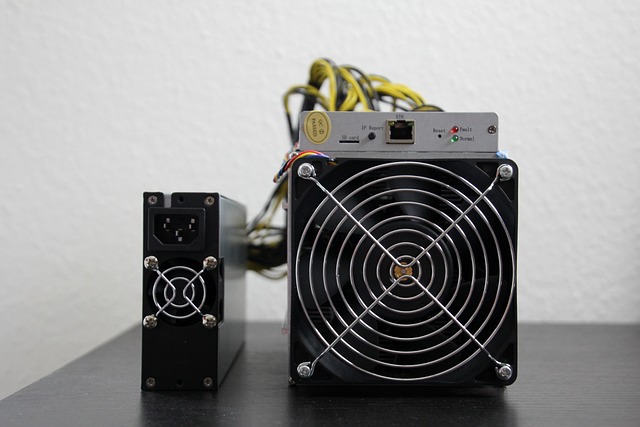Setting up a secure crypto wallet is vital for protecting digital assets in the cryptocurrency landscape. Reputable platforms offer advanced encryption, two-factor authentication, and regular security updates. Users can store, send, receive, and exchange cryptocurrencies safely using wallets with features like multi-signature auth and blockchain integration. The process involves choosing a provider, creating an account, setting up a passphrase, generating keys, and enabling 2FA. Maintaining security includes backing up data offline, personalizing settings, and keeping software updated to protect against threats in the dynamic crypto market.
In the fast-evolving world of cryptocurrency, securing your digital assets is paramount. Understanding and setting up a robust crypto wallet is your first line of defense against potential risks. This comprehensive guide delves into the intricacies of default crypto wallets—their security features, setup processes, and customization options. Learn how to create a secure digital safe for your cryptocurrencies with expert tips and best practices.
- Understanding Crypto Wallets: The Digital Safekeeper
- Why Security is Key in Cryptocurrency Storage
- Exploring Default Wallet Options and Their Features
- Setting Up Your Wallet: A Step-by-Step Guide
- Best Practices for Maintaining Wallet Security
- Advanced Tips for Customizing Your Default Wallet
Understanding Crypto Wallets: The Digital Safekeeper

In the realm of cryptocurrency, understanding and securing your digital assets is paramount. This is where crypto wallets come into play, acting as the digital safekeepers of your virtual currency. A crypto wallet is not merely a storage space; it’s a sophisticated piece of technology that facilitates the secure management and transaction of cryptocurrencies. Think of it as a digital bank account, but instead of fiat money, it stores and allows access to your cryptocurrency holdings.
Setting up a secure crypto wallet is an essential step for anyone looking to participate in the world of decentralized finance. It’s crucial to choose a reputable platform that offers robust security features like encryption and two-factor authentication. Once set up, these wallets enable users to store, send, receive, and exchange cryptocurrencies with ease while keeping their funds protected by advanced cryptographic keys. This ensures that your digital assets remain secure, even as you navigate the hustle and bustle of the cryptocurrency market.
Why Security is Key in Cryptocurrency Storage

In the realm of cryptocurrency, security is paramount and often the difference between a prosperous digital journey and a financial disaster. When it comes to storing your hard-earned crypto assets, setting up a secure crypto wallet is non-negotiable. This digital vault not only safeguards your funds but also protects them from malicious actors who may seek to steal or manipulate them.
A secure crypto wallet employs advanced encryption protocols and often includes features like multi-signature authentication, cold storage options for offline transactions, and regular security updates. It’s crucial to choose a reputable wallet provider that adheres to robust security standards, ensuring your assets are protected against potential vulnerabilities and cyber threats prevalent in today’s digital landscape.
Exploring Default Wallet Options and Their Features

When it comes to setting up a secure crypto wallet, users are often presented with various default wallet options. Each of these wallets offers unique features designed to cater to different user needs and preferences. Exploring these default choices is crucial for making an informed decision about where to store your digital assets safely.
The most popular default wallet options prioritize security, ease of use, and robust features. They often include advanced encryption protocols, multi-signature authentication, and seamless integration with various blockchain networks. Some even offer hardware wallet support for added physical security. Understanding the capabilities of these wallets can help users make a choice that aligns with their specific requirements for protecting their cryptocurrency investments.
Setting Up Your Wallet: A Step-by-Step Guide

To set up a secure crypto wallet, follow this straightforward step-by-step guide. Begin by choosing a reputable wallet provider that aligns with your needs, whether it’s for personal use or to facilitate transactions within a business. Next, create an account and verify your identity using official documentation, ensuring compliance with anti-money laundering (AML) regulations. Upon registration, you’ll receive a unique username and password, securing access to your digital vault.
Post-registration, initiate the wallet setup process. This involves selecting a secure passphrase that protects your funds from unauthorized access. Ensure this passphrase is complex and memorable but stored securely offline for safekeeping. After setting the passphrase, your wallet will generate a series of public and private keys. The public key acts as your unique address for receiving crypto assets, while the private key is essential for signing transactions, keeping them secure within your possession only.
Best Practices for Maintaining Wallet Security

Maintaining wallet security is paramount when navigating the world of cryptocurrency. The first step in securing your digital assets is to set up a secure crypto wallet. This involves choosing a reputable and reliable wallet provider that offers advanced encryption and secure storage options. Look for wallets with multi-signature authentication, cold storage capabilities, and regular security updates.
Additionally, enabling two-factor authentication (2FA) adds an extra layer of protection. Always keep your private keys secure and never share them with anyone. Regularly update your wallet software to patch any potential vulnerabilities. Backup your wallet data offline in multiple secure locations for added peace of mind.
Advanced Tips for Customizing Your Default Wallet

Personalize your crypto experience by customizing your default wallet settings. Here are some advanced tips to help you secure and optimize your digital asset storage. Firstly, ensure your wallet is set up with robust security measures like two-factor authentication (2FA) for an extra layer of protection. Customizing backup options is also crucial; enable multiple backup locations to safeguard your private keys.
Explore wallet features beyond the basics. Many wallets offer advanced functions such as custom transaction notifications, allowing you to receive alerts based on specific criteria. Additionally, consider integrating your wallet with budgeting tools or crypto analytics platforms for a comprehensive overview of your digital assets and transactions.
In conclusion, navigating the world of cryptocurrency requires a robust and secure digital safekeeper, or wallet. This article has explored the importance of security in crypto storage, delved into default wallet options, and provided a comprehensive step-by-step guide to setting up your own secure crypto wallet. By following best practices and leveraging advanced tips for customization, you can ensure your digital assets remain safe and protected. Remember, a well-configured crypto wallet is the cornerstone of secure cryptocurrency management in today’s digital era.
